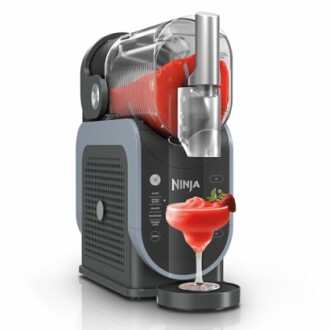
Top Trends in Home Automation for 2025
Key Takeaways
- Integration of AI for personalized experiences
- Enhanced security systems with real-time monitoring
- Seamless smart home ecosystems
- Increased focus on energy efficiency and sustainability
- Voice control becoming the norm for smart devices
In the ever-evolving world of technology, home automation continues to make daily life more convenient and enjoyable. As we approach 2025, several key trends are shaping the landscape of smart homes. This article will explore the hottest trends in home automation technologies that can simplify your life and enhance your comfort at home.
1. Integration of Artificial Intelligence
As artificial intelligence becomes more prevalent, smart home devices are increasingly leveraging AI to provide tailored experiences. AI-powered systems can learn from user behavior and adapt accordingly. For example, smart thermostats can adjust temperatures based on your schedule, ensuring optimal comfort and energy efficiency.
AI-Powered Smart Assistants
- Voice recognition for enhanced user interaction
- Personalized recommendations based on user preferences
- Learning user habits for automation of daily tasks
2. Enhanced Security Features
Security remains a top priority for homeowners. In 2025, expect to see a rise in advanced security systems integrated with home automation technologies. These systems will include features such as real-time surveillance, smart locks, and motion-sensing cameras.
Innovative Security Devices
| Feature | Description |
|---|---|
| Smart Locks | Keyless entry with mobile app control. |
| Video Doorbells | Real-time video feeds accessible via smartphone. |
| Alarm Systems | Automated alerts sent to phone or authorities. |
3. Seamless Smart Home Ecosystems
2025 will see a more interconnected smart home ecosystem where devices communicate with each other effortlessly. This interoperability allows for a more cohesive user experience. For instance, when you leave your home, your security system might activate automatically, while your thermostat adjusts for energy savings.
Benefits of Smart Home Integration
- Convenient control through a single app
- Automated routines based on location or time
- Enhanced system efficiency and performance
4. Focus on Energy Efficiency and Sustainability
With environmental concerns becoming more prevalent, many consumers are looking for solutions that reduce energy consumption. Smart devices are designed to optimize energy usage, promoting sustainability.
Energy-Saving Technologies
| Device | Energy Saving Feature |
|---|---|
| Smart Thermostats | Adaptive temperature settings based on occupancy. |
| Smart Lighting | Automatic dimming and scheduling based on time of day. |
| Smart Plugs | Remote monitoring and control for appliances. |
5. Voice Control as the Norm
As voice recognition technology improves, voice control is becoming the preferred method for interacting with smart home devices. In 2025, you can expect most smart devices to be compatible with voice assistants, allowing for hands-free operation.
Advantages of Voice Integration
- Quick and efficient access to device controls
- Enhanced accessibility for individuals with disabilities
- Personalized responses and actions based on voice commands
Conclusion
2025 is set to be an exciting year for home automation, with trends focusing on intelligent technology, enhanced security, energy savings, and seamless device integration. As homeowners continue to embrace smart technology, these trends will redefine comfort and convenience in their everyday lives.
Ninja FS301 Professional Maker with RapidChill Technology
An innovative drink and slushie machine that creates smooth, flavorful frozen drinks with ease. Includes five preset programs for perfect results every time.
Learn MoreFurther Reading
For more insights into luxury home innovations, check out our related resources:


